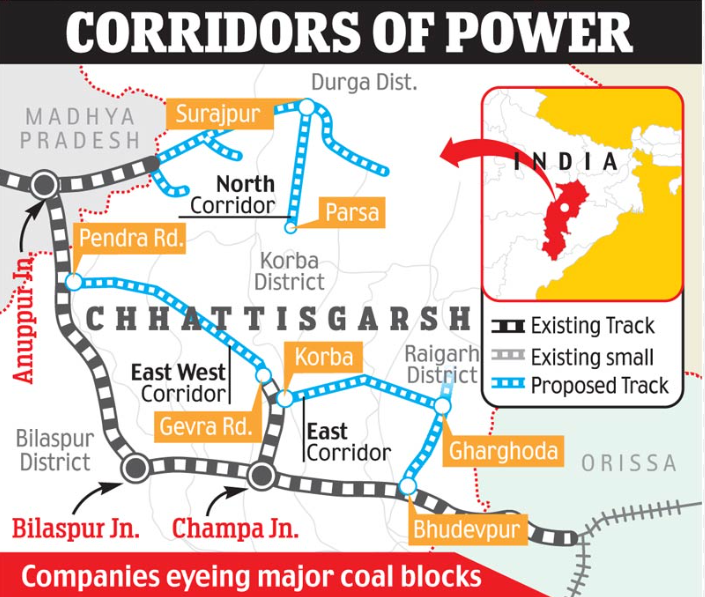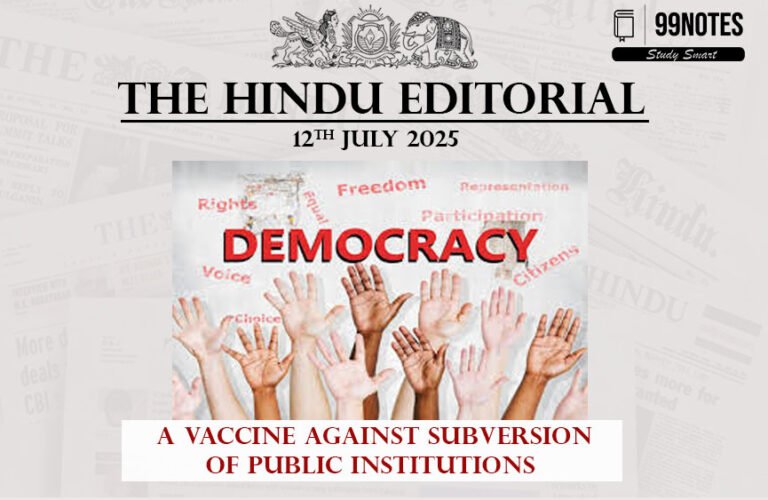22 July 2024 : Daily Current Affairs
1. India’s garment export woes self-inflicted: report
- 1. India’s garment export woes self-inflicted: report
- 2. Data gaps beyond India are holding monsoon forecasts back
- 3. ICJ Declares Israel’s Occupation of West Bank and East Jerusalem Illegal, Urges Immediate End
- 4. Bangladesh Supreme Court Reduces Controversial Quota System Amid Deadly Protests
- 5. Atmanirbhar Bharat: Two of the World’s Five Largest Coal Mines Now in India
- 6. A Nipah virus patient in Mallapuram district of Kerala, confirmed by NIV, Pune succumbs to the disease
- Prelims Facts
- 1. Biden drops out of race, endorses Kamala Harris
- 2. Dyson sphere: an energy devourer
- 3. Bhil Community Intensifies Push for Separate State as Demand Gains Momentum
- 4. Government Plans Rs 50,000 Crore Scheme to Revive Agricultural Reforms and Incentivize States
(Source – The Hindu, International Edition – Page No. – 4)
| Topic: GS3 – Indian Economy – Effects of liberalisation on the economy. |
| Context |
|
Current Export Performance:
- India’s garment exports in 2023-24 totaled $14.5 billion, a decrease from $15 billion in 2013-14.
- Vietnam’s garment exports grew nearly 82% to $33.4 billion, and Bangladesh’s grew nearly 70% to $43.8 billion over the same period.
- China’s garment exports were approximately $114 billion, a nearly 25% drop from a decade earlier.
Issues with Production-Linked Incentive (PLI) Scheme:
- The PLI scheme for textiles, launched in 2021, has not attracted significant investor interest.
- The scheme requires substantial modifications to effectively boost the sector, according to the Global Trade Research Initiative (GTRI).
Rising Imports and Domestic Concerns:
- India’s imports of garments and textiles reached nearly $9.2 billion in 2023.
- The figure may rise further if the export decline continues, particularly with the introduction of Chinese brands like Shein in India.
Complex Procedures and Import Restrictions:
- Indian garment exporters face difficulties in obtaining quality synthetic fabrics due to complex import procedures and restrictions.
- Exporters in Bangladesh and Vietnam do not encounter similar complexities, making their processes more efficient and less costly.
Quality Control Orders (QCOs) and High Costs:
- Recent QCOs have complicated the importation of essential raw materials, leading to increased costs for exporters.
- Indian exporters must rely on more expensive domestic suppliers for raw materials like polyester staple fibre and viscose staple fibre, making Indian garments less competitively priced.
Outdated Procedures and Administrative Burdens:
- The Directorate General of Foreign Trade and Customs enforces outdated procedures requiring detailed accounting for every square centimetre of imported materials.
- These procedures impose significant administrative burdens on exporters, leading to inefficiencies and additional costs.
Recommendations for Reform:
- The report suggests a comprehensive overhaul of existing procedures and policies.
- Simplifying the import process and updating regulatory practices could help reduce costs and improve export efficiency.
- Addressing these systemic issues is crucial for enhancing the competitiveness of Indian garments in the global market.
| Practice Question: Discuss the challenges facing India’s garment export sector and suggest reforms to enhance its global competitiveness. How have import duties, procedural complexities, and the Production-Linked Incentive (PLI) scheme impacted the sector? (150 Words /10 marks) |
2. Data gaps beyond India are holding monsoon forecasts back
(Source – The Hindu, International Edition – Page No. – 7)
| Topic: GS1 – Geography |
| Context |
|

Monsoon Evolution:
- The 2024 monsoon season began on May 30 as expected but has shown unexpected patterns.
- Rainfall distribution has been highly irregular, with some regions experiencing excess rain and others significant dryness.
- After a rapid northward movement of the monsoon trough, it stalled, leading to a dry June in many areas. Western Ghats have seen below-normal rainfall.
Regional Rainfall Patterns:
- An unusual pattern of excess rain has been observed from south to north, while areas like Uttar Pradesh, Bihar, Jharkhand, Odisha, and north-western India have experienced dry patches.
- This irregular distribution contrasts with predictions based on La Niña conditions, which seem to be inconsistent.
Forecasting Challenges:
- The analogy of monsoon systems popping like kernels in a kettle illustrates the inherent patchiness of rainfall.
- The ‘all-India monsoon rainfall’ index used by the India Meteorological Department (IMD) is useful for general outlooks but does not account for local variations.
- Accurate, hyperlocal forecasts are increasingly demanded by farmers, water managers, and energy companies due to the complex and patchy nature of rainfall.
Global and Regional Influences:
- The southwest monsoon is influenced by various factors, including the Arabian Sea winds, the Bay of Bengal’s convective events, and heating from West Asia and the deserts.
- Variability in the monsoon circulation is also affected by heating over the Himalayan foothills, Nepal, Bhutan, Myanmar, and Bangladesh.
- The monsoon’s complexity necessitates considering these broader influences for accurate forecasting.
Data and Forecasting Limitations:
- Despite IMD’s efforts to improve forecasting, the lack of real-time rainfall data and weather observations from parts of the subcontinent hampers accuracy.
- Global models used for forecasts often lack sufficient data for precise predictions, particularly for local scales.
Monitoring and Collaboration Needs:
- India has a historic rainfall monitoring network, but further investments in forecasting infrastructure are needed for improved accuracy.
- Better forecasting is crucial for economic growth, food, water, and energy security, as well as national security due to the impact of natural disasters.
- Extending weather and climate monitoring networks across the subcontinent could enhance safety and reduce vulnerability, benefiting all countries in the region.
Strategic Recommendations:
- Establish a broad network for weather and climate monitoring across the subcontinent.
- Improve data collection and forecasting capabilities to enhance local and regional forecast accuracy.
- Collaborate more extensively with neighbouring countries to share forecasts and improve overall regional safety and resilience.
| PYQ: What characteristics can be assigned to the monsoon climate that succeeds in feeding more than 50 percent of the won population residing in Monsoon Asia?(250 words/15m) (UPSC CSE (M) GS-1 2017) |
| Practice Question: Analyse the irregularities in the 2024 monsoon season and their implications for local forecasting. Discuss the challenges faced in accurate rainfall prediction and suggest improvements for weather monitoring and forecasting in the Indian subcontinent. (250 Words /15 marks) |
3. ICJ Declares Israel’s Occupation of West Bank and East Jerusalem Illegal, Urges Immediate End
(Source: Indian Express; Section: Explained; Page: 15)
| Topic: GS2 – International Relations |
| Context: |
|
Analysis of News:
About International Court of Justice (ICJ):
- The ICJ, also known as the World Court, is the principal judicial organ of the United Nations (UN).
- It was established in June 1945 by the Charter of the UN and began work in April 1946.
- The seat of the Court is at the Peace Palace in The Hague (Netherlands).
- Of the six principal organs of the UN, it is the only one not located in New York, United States.
- The hearings of the ICJ are always public.
- Official Languages: French and English
Powers and Functions:
The Court may entertain two types of cases:
- First, it can act as a dispute settlement body between two member States in what are called “contentious cases.” Such disputes may concern, in particular, land frontiers, maritime boundaries, territorial sovereignty, the non-use of force, violation of international humanitarian law, non-interference in the internal affairs of States and diplomatic relations.
- Second, it can accept requests to issue an advisory opinion on a legal question referred to it by a UN body or specialized agency. These opinions can clarify the ways in which such organizations may lawfully function or strengthen their authority in relation to their member States.
- The court’s judgments in contentious cases are final and binding on the parties to a case, and without appeal.
- Composition:
- It consists of 15 judges, all from different countries, who are elected tonine-year termsby majority votes in the UN General Assembly and the Security Council.
- The judges, one-third of whom are elected every three years, are eligible for reelection.
- Once elected, a member of the Court is a delegate neither of the government of his own country nor of any other State.
- In addition, the ICJ Statute allows a state party to a case before it which does not have a judge of its nationality on the bench to appoint a person to sit as judge ad hoc in that specific case.
- The Court is assisted by a Registry, its permanent administrative secretariat, which is independent of the United Nations Secretariat.
Definition of ‘Occupation’
- In international law, the definition of an occupation is primarily derived from Article 42 of the 1907 Hague Convention.
- It states that a “territory is considered occupied when it is actually placed under the authority of the hostile army.”
- Such occupation must be temporary and cannot involve a transfer of sovereignty to the occupying power.
- The occupying power has obligations, including providing for the needs of the local population and prohibiting the transfer of its own civilian population into the occupied territory, as per the Hague regulations and the Fourth Geneva Convention of 1949.
ICJ’s Advisory Opinion on Israel’s Occupation
- The ICJ’s advisory opinion was sought following a UN General Assembly resolution in December 2022, which was presented by Nicaragua and passed with 87 votes in favor, 26 against, and 53 abstentions.
- The request for this opinion predates the recent conflicts in Gaza following the Hamas attacks on October 7, 2023.
ICJ’s Findings
On Prolonged Occupation
- The ICJ noted that international law does not set a temporal limit for an occupation, but the legality of the occupation is influenced by the occupying power’s policies and practices on the ground.
- Israel’s prolonged occupation and its manner of implementation were scrutinized under this principle.
On Settlement Policy
The court examined Israel’s settlement policy in the West Bank and East Jerusalem since 1967, concluding that it violates international law. Key points include:
- The forced displacement of Palestinians due to settlement activities, violating Article 49 of the Fourth Geneva Convention.
- Breaches of various Hague regulations concerning the protection of private property, civilian objects, and the natural environment.
- The application of Israeli law in occupied territories, contrary to Article 43 of the Hague regulations.
On Annexation of Territories
- The ICJ found that Israel’s policies and practices in the West Bank and East Jerusalem are designed for permanent control, which constitutes annexation.
- This includes settlement expansion, exploitation of natural resources, and applying Israeli law in occupied territories, contravening the prohibition of force in international relations.
On Discriminatory Legislation
- The ICJ identified systemic discrimination in Israeli laws applied in occupied territories, violating international conventions against racial discrimination and apartheid.
- This includes differential treatment based on race, religion, or ethnic origin, leading to near-complete separation between settlers and Palestinians.
On Self-Determination
- The ICJ determined that Israel’s occupation violates Palestinians’ right to self-determination.
- The prolonged occupation and its associated policies undermine this fundamental right, contravening international law principles.
Future Course of Action
- The ICJ concluded that Israel must end its illegal occupation, halt new settlement activities, evacuate settlers, and make reparations to affected Palestinians.
- It also called on international organizations and states not to recognize the occupied territories as part of Israel and to refrain from aiding Israel in maintaining the occupation.
- While the ICJ’s opinion is not binding or enforceable, it holds significant moral and legal weight in the international community.
| What are the Limitations on the Functioning of ICJ? |
|
| Practice Question: Discuss the implications of the International Court of Justice’s (ICJ) advisory opinion on the legality of Israel’s occupation of the West Bank and East Jerusalem. Evaluate the potential impact of the ICJ’s findings on international diplomatic efforts and the Israeli-Palestinian conflict. (250 words/15 m) |
4. Bangladesh Supreme Court Reduces Controversial Quota System Amid Deadly Protests
(Source: Indian Express; Section: Cover Page; Page: 01)
| Topic: GS2 – International Relations |
| Context: |
|
Analysis of News:
Supreme Court’s Ruling
- Ruling on an appeal, the Supreme Court reduced the veterans’ quota from 30% to 5%, with 93% of jobs now allocated based on merit.
- The remaining 2% will be reserved for ethnic minorities, transgender individuals, and people with disabilities.
- This decision aims to address the protesters’ demands for a more merit-based system while still acknowledging the contributions of war veterans.
Background – reservation policy of Bangladesh
Reservation system notified in 1972
- The system was notified on September 5, 1972, reserving 30% of government and semi-government posts for freedom fighters, and 10% for women.
Situation after the assassination of Sheikh Mujibur Rahman
- After the assassination of Sheikh Mujibur Rahman, the founder of Bangladesh, in August 1975, however, the quotas were effectively frozen until 1996 — when Hasina became Prime Minister for the first time.
- Benefits of the freedom fighters’ quota were subsequently extended to their sons and daughters.
Situation after 2001
- After the Awami League lost power in 2001, the process of implementation of the quota slowed down again.
- But Hasina returned as Prime Minister in 2009 and, two years later, the quota benefits were also made available to the grandchildren of freedom fighters.
Withdrawal of the quota in 2018
- In 2018, the then Hasina government decided to scrap the freedom-fighter and other quotas.
- This was subsequently challenged in the court.
- In its June 5 order, the High Court ruled the government’s decision was arbitrary — and that the freedom fighters and their progeny remained one of the most backward sections of the country’s citizens.
Arguments from Both Sides
- Protesters argue that the quota system is discriminatory and benefits supporters of Hasina’s Awami League party, which led the independence movement.
- They call for a merit-based system. Hasina, however, defends the quota, emphasizing the respect owed to veterans for their war contributions, regardless of political affiliation.
- Both sides met in an attempt to reach a resolution, with the government expressing openness to discussing reforms and other student demands.
Political Implications
- The main opposition, the Bangladesh Nationalist Party (BNP), has backed the protests and vowed to organize its own demonstrations.
- The BNP denies involvement in the violence, countering ruling party accusations of exploiting the protests for political gains.
- Historically, the Awami League and BNP have accused each other of inciting political chaos and violence, a trend that continued in the lead-up to the recent national elections.
Future Prospects
- The Supreme Court’s decision and the government’s willingness to engage in dialogue with protesters might pave the way for further reforms.
- However, the political landscape remains tense, with the potential for ongoing unrest and opposition actions.
- The resolution of the quota system controversy will be crucial in shaping Bangladesh’s future governance and societal structure.
| About Razakars |
|
| Practice Question: Critically analyze the impact of the recent Supreme Court decision to scale back the controversial quota system for government job applicants in Bangladesh. Discuss the origins and rationale behind the quota system, the reasons for the student-led protests, and the potential implications of this reform on Bangladesh’s political stability and social justice. (250 words/15 m) |
5. Atmanirbhar Bharat: Two of the World’s Five Largest Coal Mines Now in India
(Source – https://www.pib.gov.in/PressReleasePage.aspx?PRID=2034007 )
| Topic: GS3 – Indian Economy – Changes in industrial policy and their effects on industrial growth. |
| Context |
|
Analysis of the news:

- South Eastern Coalfields Limited’s (SECL) Gevra and Kusmunda coal mines in Chhattisgarh are ranked 2nd and 4th among the world’s 10 largest coal mines according to WorldAtlas.com.
- Both mines are located in the Korba district of Chhattisgarh and together account for about 10% of India’s total coal production.
- Gevra opencast mine has an annual production capacity of 70 million tons and produced 59 million tons in FY 23-24. It began operations in 1981 and has reserves to meet India’s energy needs for the next decade.
- Kusmunda OC mine produced over 50 million tons of coal in FY 23-24, making it the second mine in India after Gevra to achieve such a high production level.
- The mines use advanced equipment such as the Surface Miner for eco-friendly mining operations and large Heavy Earth Moving Machinery (HEMM) for overburden removal.
- The mining operations include large 240-ton dumpers, 42 cubic metres shovels, and Vertical Rippers.
6. A Nipah virus patient in Mallapuram district of Kerala, confirmed by NIV, Pune succumbs to the disease
(Source – https://pib.gov.in/PressReleseDetail.aspx?PRID=2034771 )
| Topic: GS2 – Social Justice – Health |
| Context |
|
Nipah Virus:
- Virus Type: Nipah virus (NiV) is a zoonotic virus belonging to the Henipavirus genus of the Paramyxoviridae family.
- Reservoir: Fruit bats, specifically the Pteropus species, are the primary natural reservoirs of Nipah virus.
- Transmission: The virus can spread to humans through direct contact with infected animals (bats or pigs), consumption of contaminated food (especially raw date palm sap), or person-to-person transmission via respiratory droplets or secretions.
- Symptoms: Symptoms include fever, headache, muscle pain, vomiting, and respiratory issues. Severe cases can lead to encephalitis (brain inflammation) and coma.
- Incubation Period: Typically 5-14 days, but it can vary.
- Mortality Rate: High, with reported mortality rates ranging from 40% to 75%, depending on the outbreak.
- Prevention: No specific vaccine; prevention involves avoiding contact with infected animals, safe food practices, and isolation of patients.
- Outbreaks: First identified in Malaysia (1998), with subsequent and frequent outbreaks in Bangladesh and India.
| Practice Question: Discuss the transmission methods, symptoms, and preventive measures for Nipah virus. (150 Words /10 marks) |
Prelims Facts
1. Biden drops out of race, endorses Kamala Harris
(Source – The Hindu, International Edition – Page No. – 1)
| Context |
|
Analysis of the news:
- U.S. President Joe Biden dropped out of the 2024 race for re-election after a poor debate performance with Donald Trump.
- Biden endorsed Vice-President Kamala Harris as the Democratic nominee.
- The decision followed pressure from Democratic allies and concerns about Biden’s fitness for office.
- Biden plans to serve out his term until January 20, 2025.
- He is isolating at his Delaware beach house due to COVID-19.
- The announcement is unprecedented so close to an election; the closest parallel is President Lyndon Johnson in 1968.
- Biden’s age and debate performance raised doubts about his ability to serve another term.
2. Dyson sphere: an energy devourer
(Source – The Hindu, International Edition – Page No. – 7)
| Context |
|
 An artist’s illustration of a Dyson sphere.
An artist’s illustration of a Dyson sphere.
Dyson Sphere:
- A Dyson sphere is a theoretical megastructure proposed by physicist Freeman Dyson.
- Its purpose is to capture and harness the entire energy output of a star to meet the needs of a highly advanced civilization.
- The concept involves constructing a shell or swarm of solar panels or energy collectors around the star.
- The collected solar energy would be converted to usable power for the civilization.
- Dyson spheres are expected to emit excess heat as infrared radiation, detectable by astronomers.
- The idea suggests that if we detect unusual infrared signatures, it might indicate the presence of such a structure and, by extension, intelligent life.
- Recent searches of stars within 1,000 light years have identified seven stars with unexplained infrared emissions, potentially hinting at Dyson spheres, but no conclusive evidence has been found.
3. Bhil Community Intensifies Push for Separate State as Demand Gains Momentum
(Source: Indian Express; Section: Express Network; Page: 08)
| Context: |
|
Analysis of News:
About Bhil community
- The Bhil are one of the largest tribal groups, living in Chhattisgarh, Gujarat, Karnataka, Madhya Pradesh, Maharashtra, Andhra Pradesh and Rajasthan.
- The name is derived from the word ‘billu’, which means bow.
- The Bhil are known to be excellent archers coupled with deep knowledge about their local geography.
- Traditionally, experts in guerrilla warfare, most of them today are farmers and agricultural labourers. They are also skilled sculptors.
- Bhil women wear traditional saris while men are dressed in long frocks and pyjamas. The woman put on heavy ornaments made of silver, brass along with rosaries of beads and silver coins and earrings.
Historical Background
- The demand for Bhil Pradesh is not new. It dates back to 1913 when Govind Giri Banjara, a tribal activist, first advocated for a Bhil state.
- This demand was driven by the exploitation faced by the Bhil community, and the British government had even drafted a map for a separate Bhil state in the early 1900s.
Geographical Scope
- The proposed Bhil Pradesh would encompass 49 districts across Rajasthan, Madhya Pradesh, Gujarat, and Maharashtra.
- As per the 2011 Census, there are 1.7 crore Bhils in India, with significant populations in Madhya Pradesh, Gujarat, Rajasthan, and Maharashtra.
Conclusion
- The demand for Bhil Pradesh is rooted in a long history of cultural and political aspirations.
- While the movement has garnered significant support within the community, it faces substantial political and practical challenges.
- The future of this demand will depend on sustained advocacy and broader political negotiations.
4. Government Plans Rs 50,000 Crore Scheme to Revive Agricultural Reforms and Incentivize States
(Source: Indian Express; Section: Govt & Politics; Page: 06)
| Context: |
|
Analysis of News:
The New Agricultural Reform Scheme
- The proposed scheme, once finalized and approved, will provide central funding to states to implement specific farm sector reforms.
- These reforms focus on improving agriculture marketing, contract farming, and land leasing.
- The idea was presented to the Prime Minister’s Office in a comprehensive presentation following the Lok Sabha election results, which secured a third consecutive term for the NDA government.
- This presentation highlighted the need for transformative interventions across various economic sectors.
Historical Context and Previous Recommendations
- The new proposal revisits concepts suggested by the 15th Finance Commission in its 2020-21 report.
- The Commission had recommended performance-based incentives for states to implement agricultural reforms.
- These reforms were outlined in the Model Agricultural Produce and Livestock Marketing Act (2017), the Model Agricultural Produce and Livestock Contract Farming Act (2018), and the Model Agricultural Land Leasing Act (2016).
Challenges and Previous Attempts at Reform
- The Finance Commission identified these reforms as essential for liberalizing agricultural markets, promoting competition, and attracting private sector investment.
- However, the enactment of three farm laws in 2020, followed by their repeal, halted progress on these reforms.
- The Commission had initially noted that with two of the three recommended reforms already enacted, there was no need to incentivize states further.
Current Status and Future Prospects
- Despite the repeal of the farm laws, there has been no significant progress on farm sector reforms.
- The revival of the Finance Commission’s ideas is seen as crucial for moving forward.
- The proposed scheme, supported by the Ministry of Agriculture and Farmers’ Welfare and NITI Aayog, aims to address the stagnation in farm sector reforms and catalyze growth in agriculture.
Conclusion
- The Union Government’s renewed focus on agricultural reforms through a substantial financial outlay and performance-based incentives reflects a strategic effort to revitalize the sector.
- By encouraging states to adopt necessary reforms, the government aims to create a more competitive and efficient agricultural market, ultimately benefiting farmers and the broader economy.





